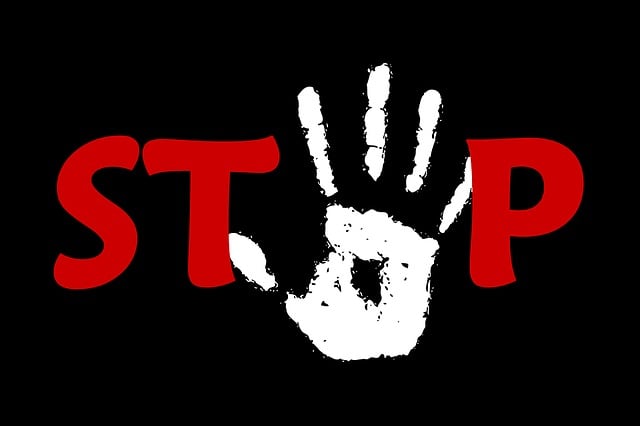You’ve wrapped up a long study session, shut your book, and felt a wave of dread. Nothing sticks. You were locked in, highlighting key lines and rereading pages. Yet, your mind treats the info like junk mail. This happens to so many students, ADHD or not. The real issue? Your brain skips what feels pointless. It craves activation, not just exposure.
Passive habits like underlining or flipping through notes build false confidence. They trick you into thinking you’re set. But facts slip away fast because repetition alone doesn’t wire them in. Your mind holds onto experiences that spark emotion or effort. Shift your approach to active study techniques, and you’ll lock in knowledge that lasts. These methods turn flat reading into brain-engaging drills. Stick around for steps that fit any schedule and crush forgetting.
Chapter 1: Forcing Retrieval Over Recognition (The Friction Method)
Traditional study tricks often miss the mark. You stare at notes, nod along, and feel ready. Then, test time hits, and panic sets in. The fix lies in ditching easy review for tough recall drills. This builds real memory paths your brain can’t ignore.
Recognizing vs. Recalling: Why Rereading Fails
Spotting familiar words feels good, but it’s not learning. Recognition lets you say, “I’ve seen this before.” Recall demands you pull details from nothing. Most school methods train the first one only. You skim textbooks and ace quizzes with open books. Close them, though, and your mind goes blank. Studies show recall boosts long-term retention by up to 50% more than passive review. Rereading builds a weak net. It catches surface stuff but drops the deep hooks needed for exams or real life.
Think of it like driving a route you’ve mapped out. Recognition is following signs. Recall is drawing the path blindfolded. Without that struggle, info fades quick.
The Blank Page Protocol: Studying for Conflict
Start simple. Grab a blank sheet or screen. Close all books, apps, and aids. Now, jot what you remember from your last session. No peeking. The gaps will stare back, and that’s okay. This friction wakes your brain. It tags info as worth keeping.
I tried this after bombing a test. At first, I recalled scraps—maybe 10% of the material. Frustration built, but each miss pushed me to fix it. Next round, more stuck. Force this pull from your head, and neural paths strengthen. It’s like gym reps for your memory. Skip the comfort of notes, and watch retention climb.
Actionable Tip: Prioritize the Struggle
Chase the tough spots in your routine. Set a timer for five minutes of blank-page recall per topic. If it feels smooth, dig deeper—quiz yourself on twists or examples. Comfort signals weak spots. Push through the grind, and your brain adapts. Aim for three sessions a day. Soon, recall becomes second nature, turning study time into real progress.
Chapter 2: Neural Anchoring Through Character Fusion (Becoming the Concept)
Facts alone bore your brain. They sit like loose papers in a drawer. Tie them to your story, though, and they glue in place. This method makes abstract ideas feel personal. Your mind loves that connection, holding tight to what mirrors your world.
Why Personal Stories Stick: The Brain as a Mirror
Ever recall a movie twist from years back? Or a friend’s wild tale? Those hook deep because they tap feelings and identity. Textbooks? They float away. You name sports stars or game levels easy. Science terms? Not so much. Your brain dumps the unrelated. It thrives on simulation, not lists. Research backs this—personal links double memory hold compared to rote facts. Dry definitions lack the spark. Weave in your life, and they transform.
Picture your mind as a scrapbook. It saves vivid clips, not faded prints. That’s why game plots endure while formulas vanish.
Roleplaying Concepts: The Simulation Technique
Step into the idea. Don’t just list supply and demand. Become Nike launching hot sneakers. “I’d hike prices sky-high; fans would still line up.” Speak it first-person. This fuses the concept to your core. It’s neural anchoring—your brain logs it as “you” stuff, like old heartaches or songs.
Try it with biology. For the Krebs cycle, say, “I’m the energy factory, spinning carbs into fuel, dodging waste at every turn.” Roleplay for 30 seconds. The drama cements it. No more detached memorizing. You’re living the process, and that imprints strong.
Actionable Tip: Narrate Your Process Out Loud
Pause every few minutes. Ask, “If I were this idea, what moves would I make?” Talk it out like a story. Get silly—make the atom a picky eater or the economy a street hustle. The weirder, the stickier. Do this daily for one topic. Your brain shifts from observer to actor. Watch how recall sharpens, making study feel alive.
Chapter 3: The Chunk Collapse Method (Compression for Access)
Your head can’t juggle whole chapters. It chokes on overload. Break big ideas into bite-sized grips. This creates quick-entry points for stress-filled moments. No more staring blank during crunch time.
Patterns Over Pages: Why Cramming Fails Under Pressure
Textbooks pile on details till your mind freezes. Brains store patterns, not walls of words. Cramming packs too much, leaving no start point. Tests prove it—retention drops 40% with info floods. You feel busy but blank out key bits. Reread all you want; without structure, it scatters. Patterns give your brain a map. They turn chaos into clear paths.
It’s like packing a suitcase. Stuff it full, and nothing fits right. Pare down, and everything grabs easy.
Collapsing Information into Friction-Rich Tags
Take the prefrontal cortex. Don’t list traits. Shrink to: “Brain’s CEO—plans ops, axes bad calls.” One line, then tag: “Executive Boss.” For Krebs cycle: “Bio Hamster Wheel—spins fuel nonstop.” Working memory? “Mind’s Tab Overload.” These tags add punch—funny or vivid ones grip best. Start with a summary sentence per chunk. Boil to 2-5 words. The friction from vividness makes them pop under fire.
Examples work wonders. Supply-demand becomes “Sneaker Hype Math.” Test yourself: Pull the tag, expand it. Builds a chain your brain follows swift.
Actionable Tip: Study for Access, Not Recall
Craft five tags per chapter. Review by tag only—no full notes. In panic, grab the handle; details unfold. Practice in short bursts. This method cuts study time while boosting output. Your brain thanks you with easy pulls, even on tough days.
Chapter 4: Sensory Reset Triggering (Waking Up the Offline Brain)
Focus fades, and words blur on the page. You’re there, but checked out. This isn’t laziness—it’s a system glitch. Quick physical jolts reboot you, pulling focus back sharp.
Overload vs. Laziness: When the Nervous System Shuts Down
Desk time builds fog. Your brain hits save-energy mode from constant input. Willpower crumbles; no amount of grit cuts through. It’s biology—prefrontal areas fatigue after 90 minutes straight. You push harder, but absorb less. Sensory links snap first in overload. That’s why reading loops without landing. Recognize the drift as a signal, not a flaw.
Feel that haze? Your nerves crave a wake-up, not more grind.
Biological Override Switches: Using Sensation to Reconnect
Hit reset with raw inputs. Splash cold water on your face—jolt hits instant. Rub an ice cube down your neck for edge. Lie flat, legs up wall, for ground. Stroll barefoot outside 60 seconds. Grip a stress ball tight. These ping your vagus nerve, steady heart, sharpen senses. No fluff; they’re body hacks that fire neurons fast. After, clarity returns. Your mind syncs with the now.
One study found cold exposure boosts alertness 30% in minutes. Simple moves like these outpace coffee for focus resets.
Actionable Tip: The 90-Second Interruption Cycle
Spot the fog? Step away for 90 seconds. Pick one trigger—ice, walk, invert briefly. Return fresh. Cycle every hour. This keeps your system primed. Study flows smoother; no more dead zones. Build it in, and sessions stretch productive.
Chapter 5: The Audio Loop: Leveraging Your Own Voice
Text stares back dull. Your voice, though? It commands trust. Record and replay to embed info deep. This sneaky loop works while you move, no stare-down required.
The Trust Signal: Why Your Voice Is the Ultimate Anchor
Brains favor self-signals. Your tone feels safe, like an inner coach. Hearing it repeat facts flags them as owned. No fight—subconscious soaks it up. This beats silent reading; familiarity skips doubt. I aced a retake this way after fails. Spoke simple, played back. Test day, answers spilled easy.
It’s your brain’s home channel. Tune in, and memory tunes up.
Multi-Sensory Encoding Through Looping
Grab your phone recorder. Explain chunks casual, like to a kid. “Prefrontal cortex? It’s the boss deciding snack or study.” Layer soft beats—lo-fi or rain sounds. Loop during walks, chores, downtime. Don’t force listen; let it hum. Rhythm bakes patterns in. ADHD minds love the multi-hit: sound, voice, motion.
Passive playtime turns active encoding. Your ears and subconscious team up.
- Step 1: Record 5-minute takes per topic.
- Step 2: Add chill audio backdrop.
- Step 3: Play twice daily, no notes.
This rhythms info into flow, not force.
Actionable Tip: Create the Echo
Build one loop per session. Replay in background routines. Recall hits like a playlist—smooth, no hunt. Flow kicks in automatic. Try it; watch study shift to effortless.
Conclusion: Making Study an Addictive System
These tools flip the script on forgetting. Retrieval builds friction for strength. Character fusion ties ideas to you. Chunking creates fast grabs. Sensory resets wake the fog. Audio loops echo trust deep. Together, they match your brain’s love for play and pulse.
No more battling a stubborn mind. Hook it with experience, and knowledge sticks natural. Study turns from drag to draw—craved like a quick game level. Start small: Pick one method today. Build the chain, and watch grades, confidence, life level up. You’ve got this; make your brain your ally.



